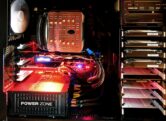Unlocking Wellness: The Transformative Power of Acupuncture Therapy
Table of Contents
- 1. Introduction to Acupuncture
- 2. Historical Background
- 3. How Acupuncture Works
- 4. Benefits of Acupuncture Therapy
- 5. Safety and Side Effects
- 6. Acupuncture in Modern Healthcare
- 7. Case Studies and Real-Life Examples
- 8. Conclusion and Future Directions
1. Introduction to Acupuncture
Acupuncture, a form of Traditional Chinese Medicine (TCM), has been practiced for thousands of years. This therapy involves the insertion of fine needles into specific points on the body to promote natural healing and balance. It is based on the belief that energy, or ‘Qi' (pronounced ‘chee'), flows through meridians in the body. The blockage or imbalance of this energy can lead to health issues. As a result, acupuncture aims to restore the flow of Qi, facilitating the body's regenerative capabilities.
The Philosophy of Acupuncture
At the core of acupuncture lies the concept of balance—both within the body and in relation to the environment. This section delves into the philosophical underpinnings of acupuncture, discussing the yin-yang principle, the Five Elements theory, and the role of Qi in maintaining physical, emotional, and spiritual health.
Acupuncture in Various Cultures
Although most commonly associated with Chinese medicine, variations of acupuncture exist in numerous cultures. This discussion reviews acupuncture-like practices globally, looking at their techniques, philosophies, and health implications, showcasing how this ancient practice has transcended cultural boundaries.
2. Historical Background
Acupuncture has an extensive historical background that dates back to ancient civilizations, particularly in China. Archeological findings suggest its practice as early as 100 BC, with foundational texts such as the ‘Huangdi Neijing' (The Yellow Emperor's Classic of Medicine) providing detailed insights into its theories and applications. This section examines historical milestones that inform our modern understanding of acupuncture.
The Evolution of Acupuncture
This part of the article chronicles the evolution of acupuncture techniques from antiquity through dynastic China to its introduction to the Western world. It will explore how goes acupuncture, adjusting to various contexts over time, including its integration with Western medical practices.
Influence of Key Figures
This section provides insights into influential figures who shaped the development of acupuncture, including notable physicians, scholars, and practitioners throughout history, establishing how their contributions impacted both the practice and perception of acupuncture.
3. How Acupuncture Works
The mechanism of acupuncture involves stimulating specific body points, which has been studied through various scientific lenses. Western research highlights its potential benefits in managing pain and stress reduction by impacting the nervous system, while TCM emphasizes restoring Qi balance.
The Neurophysiological Mechanism
This section explains how acupuncture affects the nervous system and the release of endorphins, neurotransmitters, and affects blood circulation. It also discusses relevant studies that support these mechanisms.
Meridians and Acupuncture Points
This part covers the established theories of acupuncture points and meridian systems, defining the primary points used in treatments and examining their significance in achieving balance and promoting healing.
4. Benefits of Acupuncture Therapy
Acupuncture presents numerous health benefits, ranging from pain relief to improved mental health. This section offers an in-depth examination of the various conditions effectively treated with acupuncture.
Pain Management
This subsection investigates acupuncture's recognized efficacy in treating different pain conditions, such as chronic pain, arthritis, migraines, and much more. It also includes patient testimonials showcasing real-life successes.
Enhancing Mental and Emotional Well-Being
Acupuncture has been identified as a valuable tool for managing anxiety, depression, and other mood-related disorders. This analysis looks at how acupuncture can assist in mental wellness, including self-reported outcomes from patients.
5. Safety and Side Effects
Like any medical treatment, acupuncture carries potential risks and side effects. Understanding these factors is crucial for informed decision-making regarding its use.
Common Side Effects
This section outlines common side effects, including bruising and soreness at needle sites, as well as more serious risks associated with improper placement of needles. Real-life experiences from patients are discussed for a clearer perspective.
Safety Guidelines and Considerations
Here we will evaluate safety protocols, including the importance of choosing properly trained practitioners, understanding sterile practices, and recognizing contraindications based on individual health history.
6. Acupuncture in Modern Healthcare
As acupuncture gains traction in mainstream medicine, research expands into its integration with conventional treatments. This section reviews how healthcare systems are beginning to incorporate acupuncture into patient care.
Clinical Trials and Scientific Research
This part analyzes a multitude of scientific studies that validate acupuncture's effectiveness, discussing their designs, outcomes, and overall contributions to the legitimacy of acupuncture as a therapeutic option.
Integrative Healthcare Models
Exploring how different healthcare systems worldwide perceive and integrate acupuncture into their practices is essential. This discussion will outline case studies of healthcare institutions applying acupuncture therapeutically alongside conventional treatments.
7. Case Studies and Real-Life Examples
Citing real-life examples and case studies provides practical illustrations of how acupuncture transforms patients' lives. This section compiles various testimonials and documented cases, emphasizing diverse conditions treated through acupuncture.
Patient Testimonials
This section compiles firsthand accounts from patients who experienced transformative benefits from acupuncture, detailing their journeys and outcomes.
Documented Treatment Protocols
This discussion reviews specific cases, detailing treatment protocols and their applications across various conditions, showcasing the adaptability and effectiveness of acupuncture therapy.
8. Conclusion and Future Directions
Concluding this extensive overview, we summarize the fundamental tenets of acupuncture, emphasizing both its historical significance and modern relevance. Future trends include broader acceptance in healthcare settings, ongoing research, and the potential integration of acupuncture with advanced technology.
Recommendations for Further Reading
Suggestions for individuals interested in continuing their study of acupuncture and holistic health practices provide avenues for further exploration.
Q&A Section
Q: Is acupuncture safe for everyone?
A: While acupuncture is generally safe, it may not be suitable for individuals with certain medical conditions or those who are pregnant. It’s crucial to consult with a healthcare provider before commencing acupuncture treatment.
Q: How long does a typical acupuncture session last?
A: Most acupuncture sessions last between 30 to 60 minutes, depending on the patient's needs and treatment goals.
Q: Can acupuncture be used alongside other therapies?
A: Yes, acupuncture can be effectively combined with other therapies, including physical therapy, medication, and counseling. Always consult with healthcare providers for optimal outcomes.
Resources
| Source | Description | Link |
|---|---|---|
| National Center for Complementary and Integrative Health | Provides detailed information about acupuncture, its efficacy, and safety. | NCCIH |
| American Academy of Medical Acupuncture | Offers resources and education on acupuncture and integrative medicine. | AAMA |
| World Health Organization (WHO) | Reports on acupuncture's effectiveness for various health conditions. | WHO |
| “The Yellow Emperor’s Classic of Internal Medicine” | A foundational text for understanding traditional Chinese medicine, including acupuncture. | N/A |
Conclusion
Acupuncture, as a transformative therapeutic approach, bridges ancient wisdom with modern healthcare applications. It offers profound healing potential across diverse health conditions, enhancing well-being holistically. Continued research, patient advocacy, and integrated healthcare models suggest a promising future for acupuncture therapy in the healthcare landscape.
Disclaimer
The information provided in this article is intended for educational purposes only and should not be considered a substitute for professional medical advice, diagnosis, or treatment. Always seek the advice of your physician or other qualified health providers with any questions you may have regarding a medical condition. Never disregard professional medical advice or delay in seeking it because of something you have read in this article.










